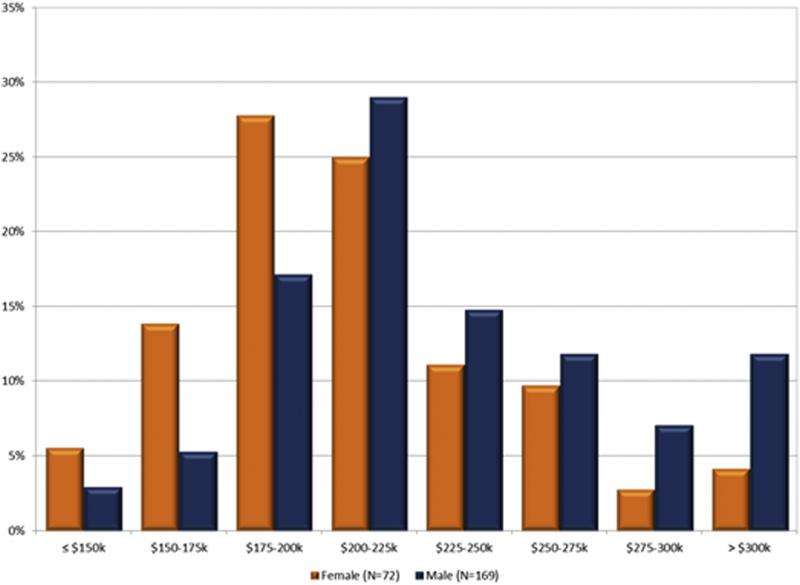Women in high-income medical education positions still paid less than men

The existence of gender-based wage gaps in many occupations continues to be a hot-button topic in social and political debates. While much attention has been focused on medium- and lower-wage positions, some studies have shown that wage disparities extend to high-wage, high-prestige positions. According to a new study published in The American Journal of Medicine, women who serve as directors of internal medicine residency programs are paid less than their male counterparts.
"Despite the increased percentage of women faculty in U.S. academic medicine, disparities in achievement still exist," according to lead author Lisa L. Willett, MD, of the Department of Medicine, University of Alabama at Birmingham. "The disparity exists regardless of region, program type, academic rank, general internal medicine specialty, age, or years of experience. In addition, we found that the gap in salary has not narrowed over the past five years."
Salary data was divided into $25,000 increments and the mode, or most likely, salary was $200,000 to $225,000 for men and $175,000 to $200,000 for women. Even after controlling for academic rank, career path in general internal medicine, and age, the differences remained. The authors also found that these differences have persisted since at least 2008.
The authors analyzed responses from 241 program directors and program administrators from the annual Association of Program Directors in Internal Medicine (APDIM) survey in August 2012. Historical trends were assessed from similar data from the 2008-2011 surveys.
A residency program director plays a pivotal role in academic medicine centers for Graduate Medical Education (GME). GME is responsible for training the nation's physician workforce and its importance is reflected in the level of public funding of more than $13 billion per year. Program directors are responsible for the oversight of the curriculum, evaluations, work hours, supervision, fatigue, verifications, scholarship, and schedules of more than 110,000 residents and fellows enrolled in U.S. GME programs.
The authors advise that "Leaders in academic medicine centers, residency and fellowship directors, and all faculty in medical education need to be aware that the salary disparities cited decades ago still persist in this important population of medical educators. Reporting this information is an important step in addressing the disparity in an effort to improve it. Sponsorship of women without awareness of, and subsequent advocacy for, salary equity is unlikely to correct these disparities."
More information: "Gender Differences in Salary of Internal Medicine Residency Directors: A National Survey," The American Journal of Medicine, Volume 128, Issue 6 (June 2015) DOI: dx.doi.org/10.1016/j.amjmed.2015.02.002



















